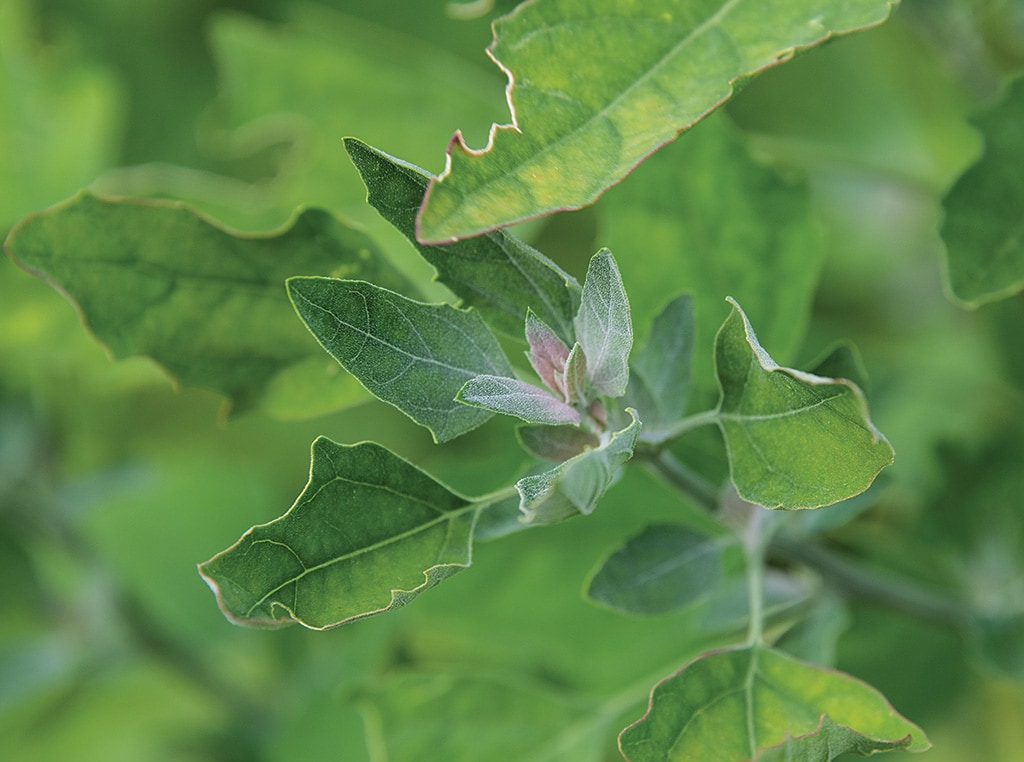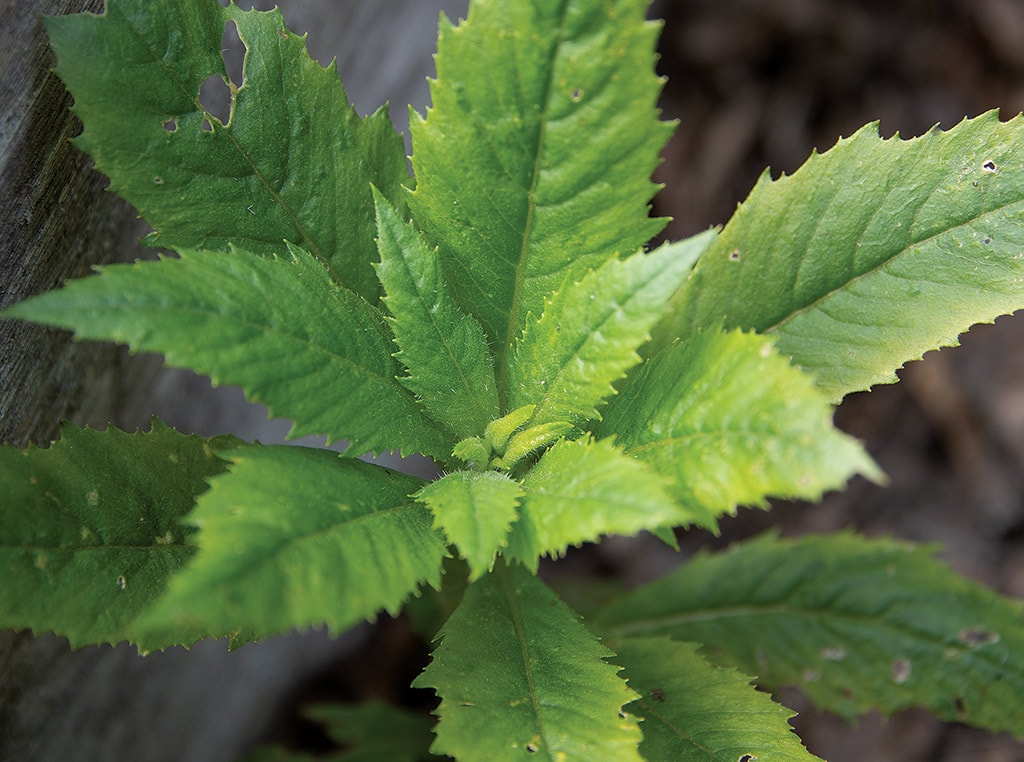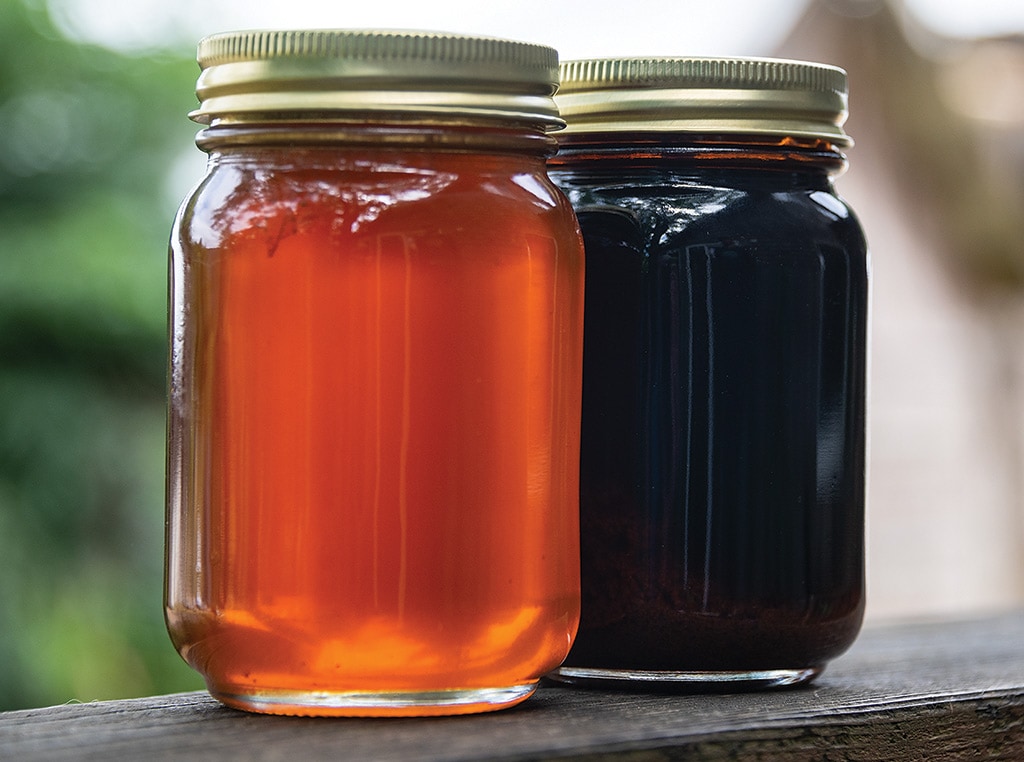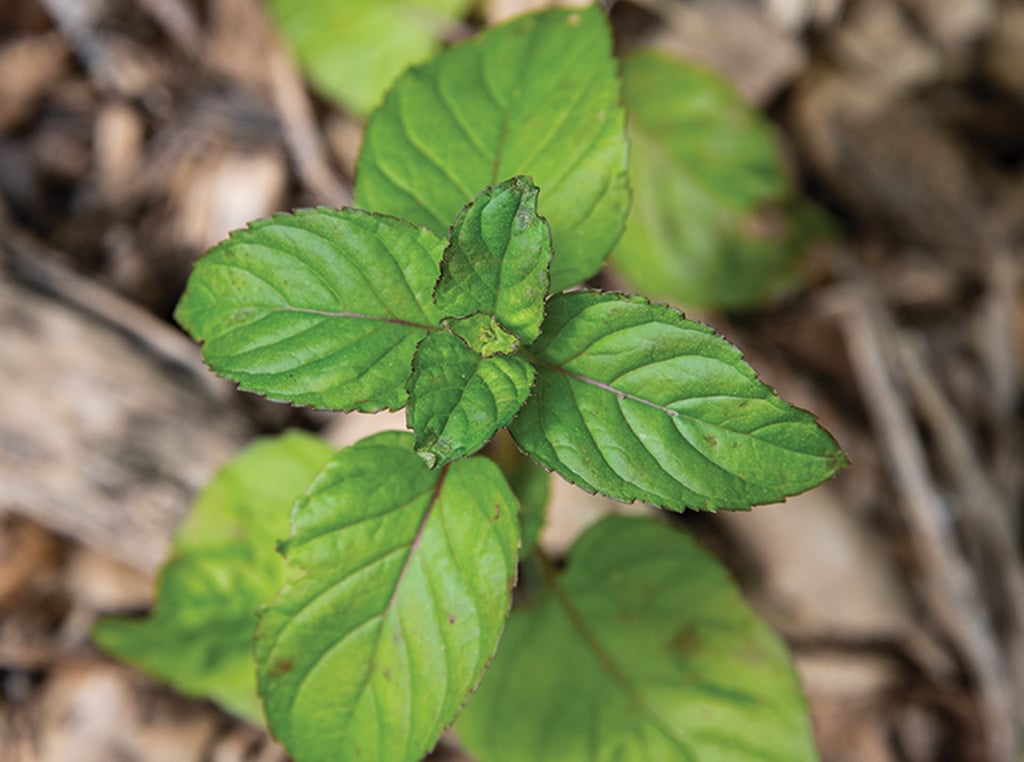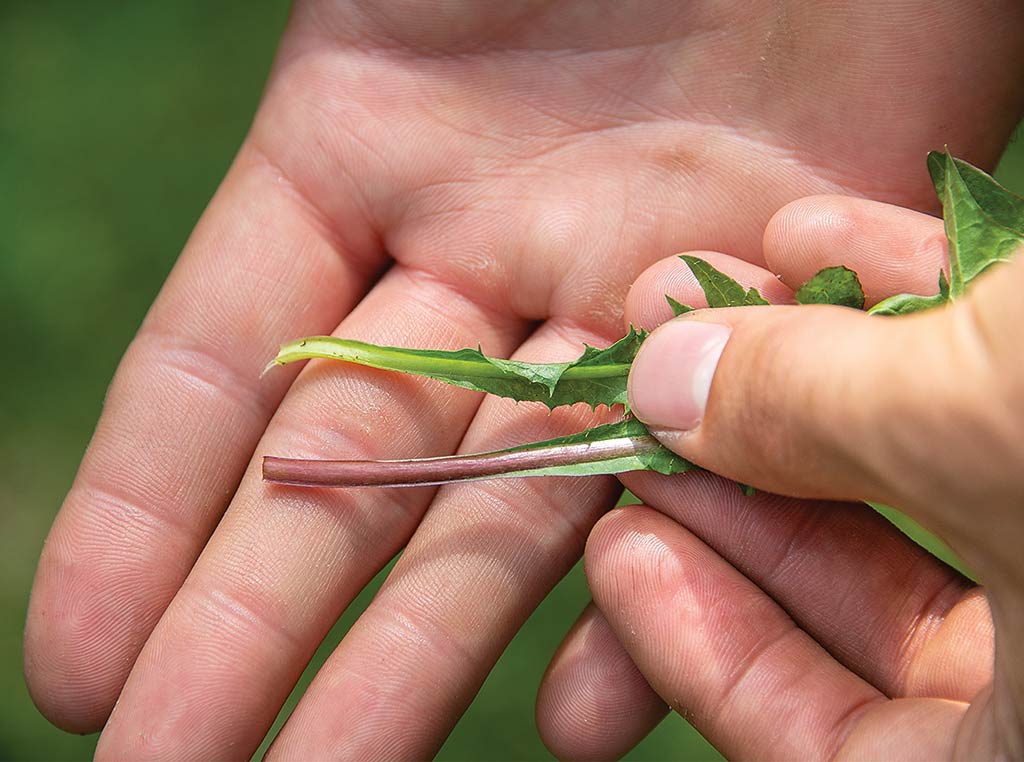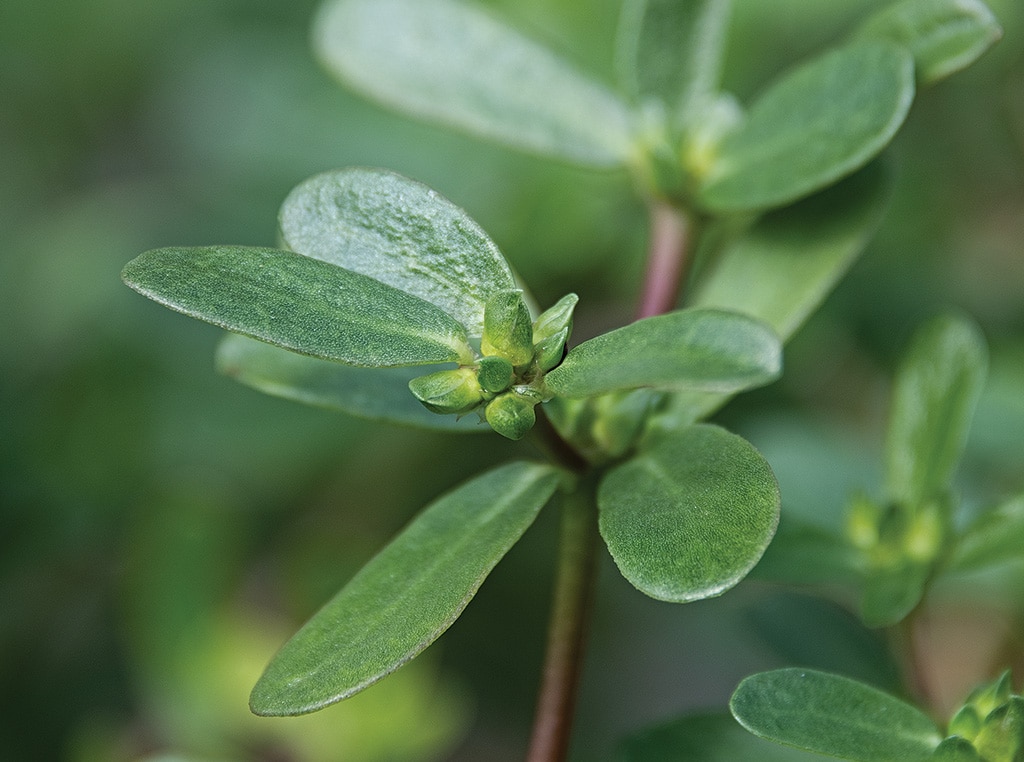Agriculture, Sustainability December 01, 2021
Weed Eaters
Wild plants move from the crosshairs to the plate.
Some call them “self-growing vegetables.” Others say, “if you can’t beat ‘em, eat ‘em.” And many gardeners just pull or spray them on principle, figuring anything they didn’t plant themselves is just a weed.
But as Luke Marion—known to almost 1 million subscribers on YouTube, as well as his Facebook fans, as the MIgardener—notes, many plants that we disparage as common weeds are “superfoods” in their own right, packed with nutrients and flavor. Perhaps if we recognized their benefits, we’d welcome them into the garden rather than trying to eradicate them.
Free food. “I look at it as free food,” Marion says, pointing out little patches of weeds he lets run in his bountiful organic garden in Marysville, Michigan. He’s almost as enthusiastic about a clump of purslane that has taken over a corner of one of his raised beds as he is about the heirloom tomatoes growing a couple of feet away, and his energy is infectious.
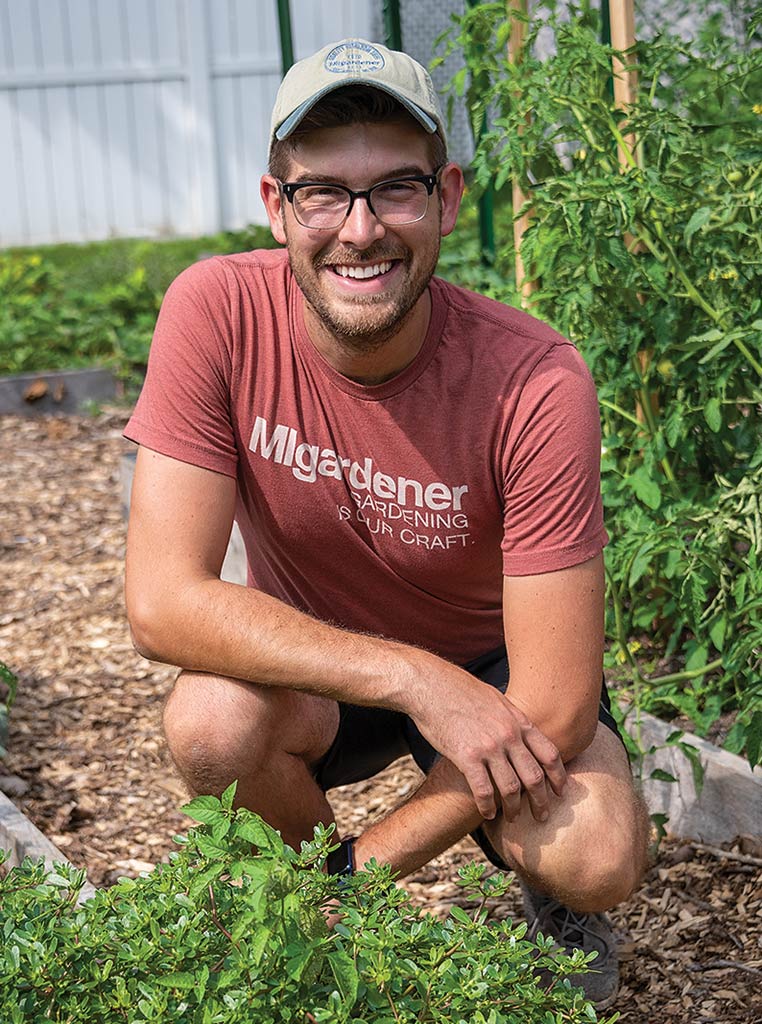
Luke Marion is known all over the internet as the MIgardener. His enthusiasm for the bounty of his garden extends to many of its volunteers, like this clump of purslane, which combines a lemony sharpness with the slippery mouthfeel of okra.
“They don’t require any fertilizer, or very little fertilizer,” he adds. “They don’t require any watering. So if I don’t have to take any effort to grow them and they taste good—or like in the case of lambsquarters, they taste incredible—there’s almost no downside at all to growing them other than they spread like a weed.
“A lot of wild edibles also have really concentrated nutrients because they’re so hardy, they’re so rugged, whereas something like a cucumber is more pampered and a lot of it is water content,” Marion notes. He’s quick to point out that he’s not on a survivalist mission.
“If I see it growing and I know I can eat it and it tastes good, great,” Marion explains. “But I don’t need the stuff that tastes like famine food.”
Many plants we consider weeds are also heritage foods with long cultural histories. For instance, sorrel is the foundation of Frankfurt, Germany’s famous Green Sauce. Native Americans and settlers on the frontier used nettles as food and medicine. Cultures throughout Central and South America subsisted on amaranth.
Marion’s favorite self-growing superfood is lambsquarters, which is packed with vitamins C and A. He likes to treat it like spinach, sauteeing it with chicken. Like many weeds, lambsquarters gets more bitter as the season progresses.
Then there’s that big clump of purslane. Plucking a leaf and taking a bite, it’s moist, lemony, and a little slick, like okra.
Like salmon, walnuts, and soybean oil, purslane is high in Omega-3 fatty acids, Marion notes, which are important for cell building, brain health, and immune function.
“The Chinese actually call this ‘the memory herb’ because of the Omega-3 fatty acids, and it’s super, super good,” he says.
“We added it to salads, or we’ll saute it down.”
It’s important to be able to differentiate wild edibles from toxic lookalikes. Marion points out the difference between mounding, succulent purslane and toxic spurge, a flat, sprawling plant that has thin, opposite leaves growing on woody stems. Still can’t tell the difference? Snap the stem. Spurge will ooze a white, milky sap. Another lemony favorite is oxalis or yellow wood sorrel, a shade-loving plant whose lobed, clover-like leaves contrast with yellow flowers.
“That is a truly delightful edible that most people have never heard of,” Marion says. He warns that the plant contains high levels of oxalic acid, so people prone to kidney stones should avoid eating it.
Above. Epazote is a popular ingredient in Mexico. Wild mint is mild-flavored. Marion appreciates not having to fight every weed. Dandelions are best in the spring; red-midribbed Italian dandelions are less bitter than green species. Washington wildflower honey is pale in comparison to rich, dark Japanese knotweed honey—one of the few nice things about the invasive species.
Dandy dandelions. Marion is a fan of one of the most common (and frustrating) lawn invaders, the dandelion. He notes that dandelions are among the world’s most nutrient-dense greens, packed with vitamins A, K, and C. But there are a couple of tricks to enjoying dandelions, he notes.
First, look for the red midribs of Italian dandelions, which are less bitter than the green-veined species, Marion advises. And like lambsquarters, eat them early—dandelions grow more bitter in the summer. By the time a broken leaf starts exuding milky sap, the plant has become unpalatable.
“It’s not everybody’s cup of tea, but if you tried dandelion and say, ‘no way,’ maybe you tried the wrong one and you tried it in August when it was a hundred degrees out,” he says. “Big difference. You’ve got to be mindful of that. The Italian dandelions, early in the spring, they’re just about as sweet as spinach. Very little bitterness at all.”
You don’t need to encourage dandelions in your lawn to enjoy them in salad, Marion adds. Keep mowing the ones in your lawn down to suppress them, and just go dandelion hunting in a park.
A common neighbor to dandelions in lawns and grassy fields is plantain. The plant’s oval leaves with stringy veins and strange, egg-shaped flowers surrounded in the middle by a halo of white petals are very distinctive.
“It gets mowed over all the time, but plantain is a fantastic wild edible,” Marion says. “If you eat it raw, it tends to be a little bitter and stringy, but when you cook it, a lot of the bitterness cooks out of it. I treat it just like spinach.”
Surprise treat. One resident of Marion’s garden turned out to be an exciting surprise to his father-in-law, who emigrated from Mexico decades ago but was quick to recognize the toothed leaves of epazote. Epazote has a deep flavor that seems to hover between fennel and oregano. It is also often added to bean dishes not only for its flavor but because it is a carminative—anti-gas—agent.
Marion cautions that pregnant women should avoid epazote. The herb contains a chemical called ascaridole, which can cause uterine contractions.
The weeds Marion welcomes in his garden aren’t just greens—there’s dessert, too, like wild mint, which is milder than peppermint or spearmint, and wild strawberry, creeping plants with tiny berries that pack big strawberry flavor.
New joy. Once you start recognizing edible weeds, you can find a new joy in your garden.
“It helps you realize that not everything is something we have to try and kill,” he says. “As an organic gardener, I don’t want to fight Mother Nature. I want to work easier, not harder. Some weeds are inevitable. So if some of them are food, it’s less fighting that I have to do.” ‡
Read More
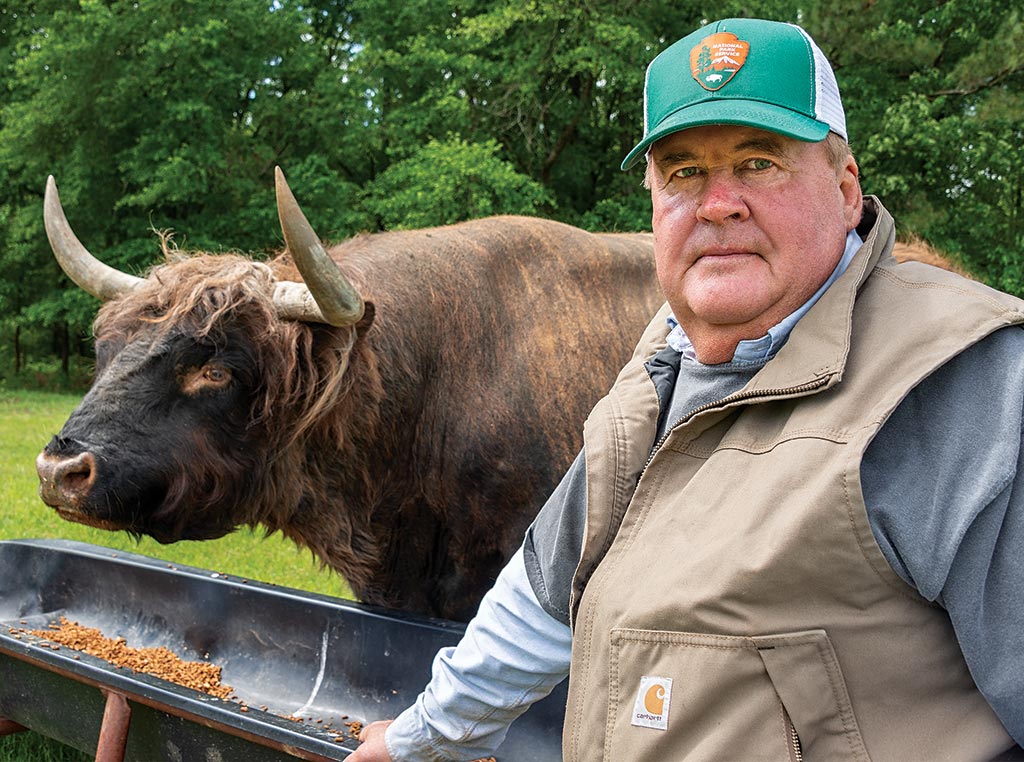
AGRICULTURE, LIVESTOCK/POULTRY
Upcycling Heritage Cattle Breed
Farm from scratch? Time to shake things up.

RURAL LIVING
Work from Anywhere
Remote working lets family live where they want to.

